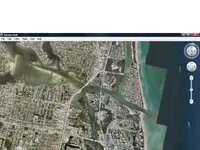C
Cappy Z.
Guest
- #1
Thread Owner
You know, alot of folks talk about Sebastian and Wabasso but me thinks Jupiter Beach is the hottest treasure beach to look. There have been coins from 1600's found there, and of course many other dates some that would include the 1715 Plate fleet. But if one looks at a largermap more inclusive of the Bahamas....the west End of the Bahamas is almost directly across from Jupiter. Now if I was a swashbuckling pirate and me crew were hitting English, French and Spanish ships...what a perfect hideout in the inlet? I bet that area is loaded with artifacts just waiting for the picking. I'd bet my last doubloon there are a handful of TNers down there that know a whole heck of a lot more.

Upvote
0


